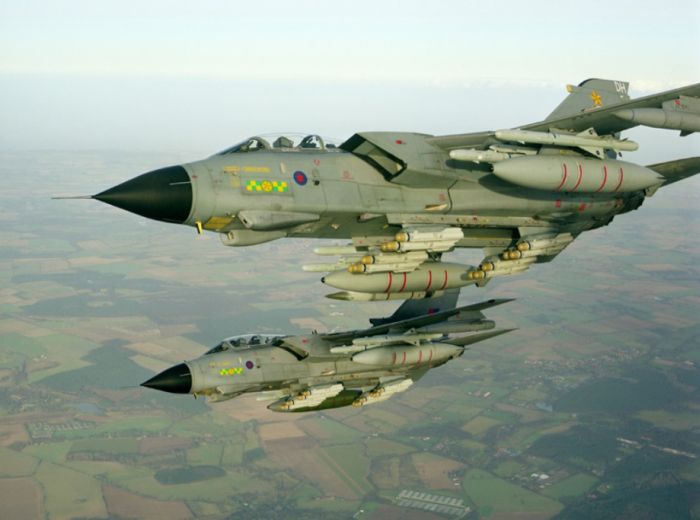|
|
Panavia Tornado Combat Aircraft
|
The Tornado features a tandem-seat cockpit, crewed by a pilot and a navigator/weapons officer; both electromechanical and electro-optical controls are used to fly the aircraft and manage its systems. An array of dials and switches are mounted on either side of a centrally placed CRT monitor, controlling the navigational, communications, and weapons-control computers. BAE Systems developed the Tornado Advanced Radar Display Information System (TARDIS), a 32.5-centimetre (12.8 in) multi-function display, to replace the rear cockpit's Combined Radar and Projected Map Display; the RAF began installing TARDIS on the GR4 fleet in 2004.
The primary flight controls of the Tornado are a fly-by-wire hybrid, consisting of an analogue quadruplex Command and Stability Augmentation System (CSAS) connected to a digital Autopilot & Flight Director System (AFDS); in addition a level of mechanical reversion capacity was retained to safeguard against potential failure. To enhance pilot awareness, artificial feel was built into the flight controls, such as the centrally located stick; because of the Tornado's variable wings enabling the aircraft to drastically alter its flight envelope, the artificial responses adjust automatically to wing profile changes and other changes to flight attitude. As a large variety of munitions and stores can be outfitted, the resulting changes to the aircraft's flight dynamics are routinely compensated for by the flight stability system.
The Tornado incorporates a combined navigation/attack doppler radar that simultaneously scans for targets and conducts fully automated terrain-following for low-level flight operations; being readily able to conduct all-weather hands-off low-level flight was considered one of the core advantages of the Tornado. The Tornado ADV has a different radar system to other variants, designated AI.24 Foxhunter, as it is designed for air defence operations; it is capable of continuously keeping track of up to 20 targets at ranges of up to 160 kilometres (100 mi). The Tornado was one of the earliest aircraft to fitted with a digital data bus for data transmission. A link 16 JTIDS integration on the F3 variant enabled the exchange of radar and other sensory information with nearby friendly aircraft.
Some Tornado variants carry different avionics and equipment, depending on their mission. The Tornado ECR is devoted to Suppression of Enemy Air Defences (SEAD) missions, operated by Germany and Italy. The Tornado ECR is equipped with an emitter-locator system (ELS) to spot radar use. German ECRs have a Honeywell infrared imaging system for reconnaissance flights. RAF and RSAF Tornados have the Laser Range Finder and Marked Target Seekers (LRMTS) for targeting laser-guided munitions. In 1991, the RAF introduced TIALD, allowing Tornado GR1s to laser-designate their own targets.
|
|









